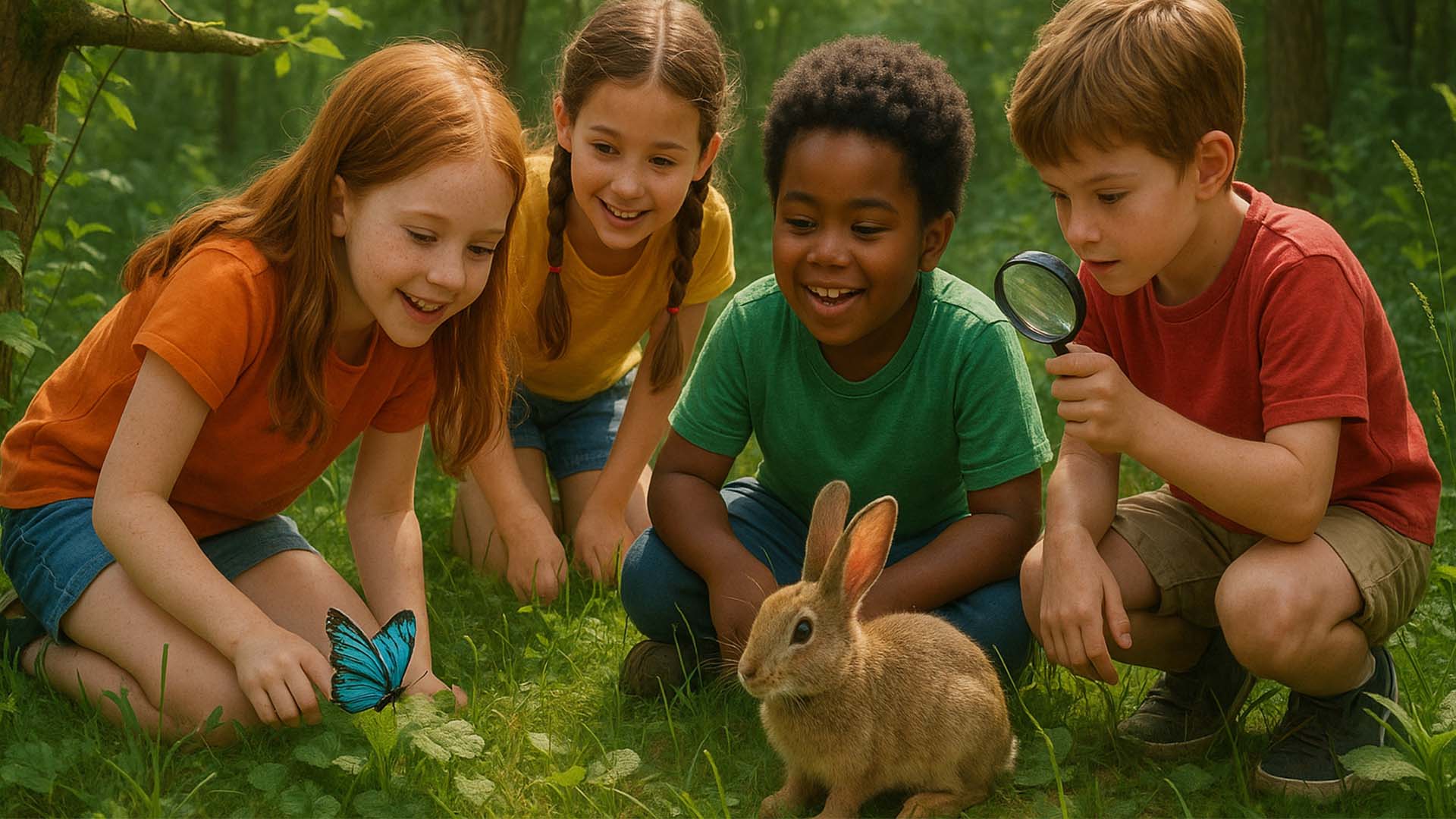The natural world is a vast and wondrous classroom, offering endless opportunities for children to learn, explore, and develop a deep appreciation for life around them. From the smallest insect to the tallest tree, every living thing plays a role in our planet’s intricate ecosystems.
Helping children discover the fascinating lives of animals and plants, and understanding where they live, can spark curiosity, foster a sense of wonder, and lay the groundwork for lifelong environmental stewardship.
This article will guide parents and educators on how to encourage children to explore nature, learn about biodiversity, and understand the interconnectedness of all living things.
Why is it important for children to learn about animals, plants, and their habitats?
Learning about animals, plants, and their habitats is fundamental to understanding how our world works. It teaches children about biodiversity—the rich variety of life on Earth—and the delicate balance of ecosystems [1]. This knowledge helps them grasp concepts like food chains, adaptation, and the impact of environmental changes. Moreover, direct interaction with nature has numerous benefits for children’s physical and mental health, promoting creativity, problem-solving skills, and a sense of calm [2].
Exploring the Animal Kingdom
Animals are often a child’s first introduction to the wonders of nature. Whether it’s a bird singing outside the window or a squirrel scampering up a tree, these encounters provide valuable learning moments. Encouraging observation and asking questions can deepen their understanding.
Fun ways to learn about animals
- Nature Scavenger Hunts: Create a list of animals or signs of animals (e.g., feathers, tracks, nests) for children to find in a local park or backyard. This encourages keen observation [3].
- Bird Watching: Provide binoculars and a simple bird guide. Learning to identify different bird species and their calls can be a rewarding activity.
- Insect Investigations: Turn over rocks and logs (gently!) to discover the hidden world of insects. Discuss their roles in the ecosystem, like decomposition or pollination [2].
- Visit Zoos or Wildlife Sanctuaries: These places offer controlled environments to observe a wider variety of animals and learn about conservation efforts.
The Wonderful World of Plants
Plants are the foundation of most ecosystems, providing food, oxygen, and shelter for countless organisms. Helping children understand the life cycle of plants and their importance can be a hands-on and rewarding experience.
Engaging activities to discover plants
- Gardening: Planting seeds, watering, and watching plants grow teaches children about life cycles, responsibility, and where food comes from. It can be as simple as a small pot on a windowsill or a backyard vegetable patch [4].
- Plant Identification: Use a field guide to identify different trees, flowers, and shrubs in your neighborhood. Discuss their unique features and how they contribute to the environment.
- Nature Art: Collect leaves, flowers, and twigs to create collages or rubbings. This encourages creativity while connecting with natural materials.
- Explore Different Habitats: Visit various natural areas like forests, wetlands, or meadows to observe how different plants thrive in different conditions [5].
Understanding Homes: Habitats and Ecosystems
Every animal and plant has a specific place where it lives, called a habitat. These habitats are part of larger ecosystems, where living organisms interact with each other and their non-living environment. Teaching children about habitats helps them understand the interconnectedness of nature and the importance of protecting these spaces.
What are habitats and why are they important?
A habitat provides everything an organism needs to survive: food, water, shelter, and space. Different animals and plants are adapted to specific habitats. For example, fish live in water, while desert plants can survive with very little water. Protecting habitats is crucial because if a habitat is destroyed, the plants and animals that live there may not be able to survive [5].
Q&A: Your Nature Discovery Questions Answered
Q1: How can I make learning about nature fun for my child?
A1: Turn it into an adventure! Go on nature walks, create scavenger hunts, or start a small garden together. Hands-on activities and direct observation are often the most engaging ways for children to learn about nature [2, 3].
Q2: What is biodiversity and why does it matter?
A2: Biodiversity is the variety of all living things—plants, animals, and microorganisms—on Earth. It matters because a rich biodiversity ensures healthy ecosystems that provide us with clean air, water, food, and medicines. Each species plays a role in maintaining the balance of nature [1].
Q3: How can we help protect animals and plants in our local area?
A3: Simple actions can make a big difference! You can plant native plants to support local wildlife, reduce waste to protect habitats, participate in local clean-up events, and learn about and respect the animals and plants in your community [4].
Sources
- [1] American Museum of Natural History. Biodiversity for Kids: OLogy. https://www.amnh.org/explore/ology/biodiversity
- [2] Play Teach Repeat. Beautifully Simple Nature Activities. https://playteachrepeat.com/beautifully-simple-nature-activities/
- [3] NAEYC. 10 Ideas to Get You and Your Child Exploring Outdoors. https://www.naeyc.org/our-work/families/ideas-exploring-outdoors
- [4] Run Wild My Child. (2023, May 3). Eco-Friendly Sustainability Activities for Kids. https://runwildmychild.com/sustainability-activities-for-kids/
- [5] Generation Genius. Habitats for Kids | Learn all about deserts, forests, & more. https://www.generationgenius.com/plant-and-animal-life-cycle-lesson-for-kids/








0 Comments